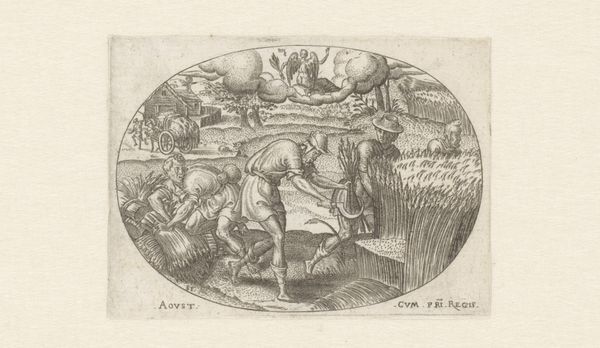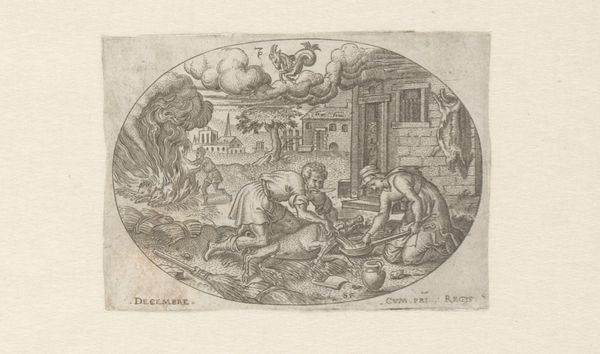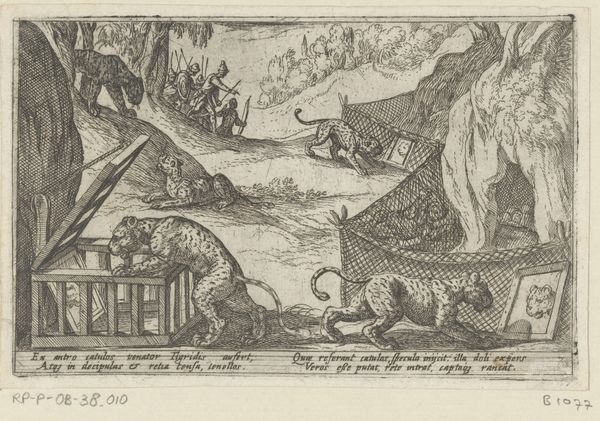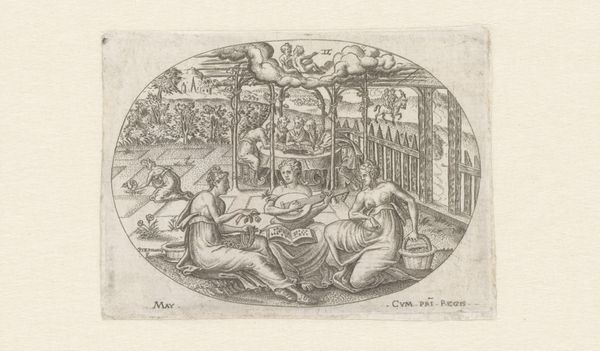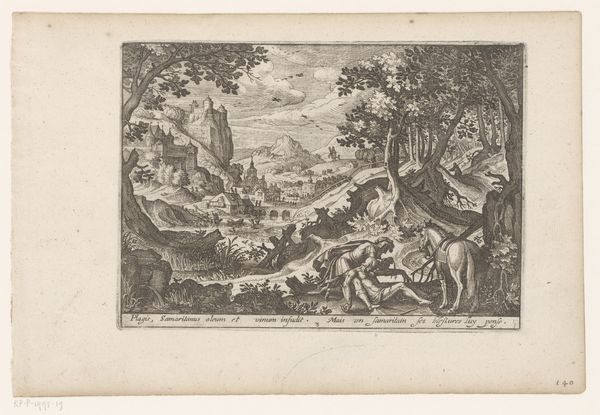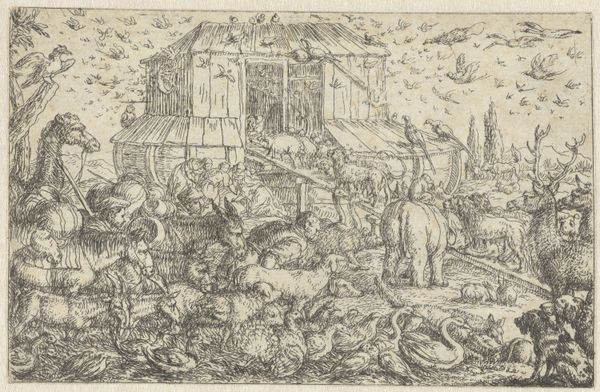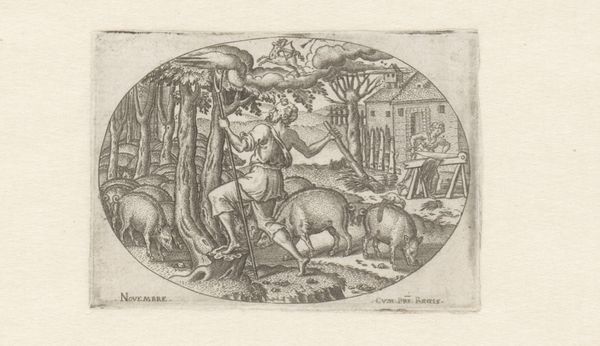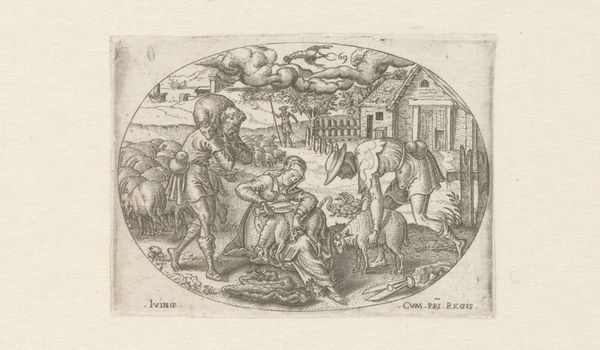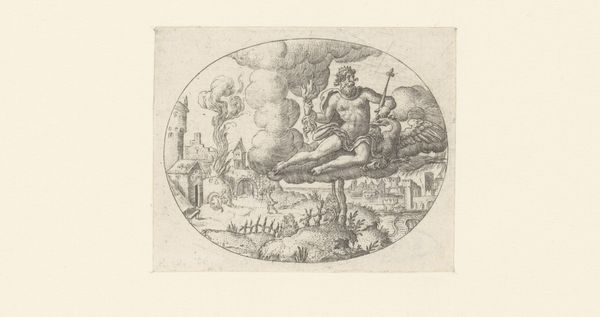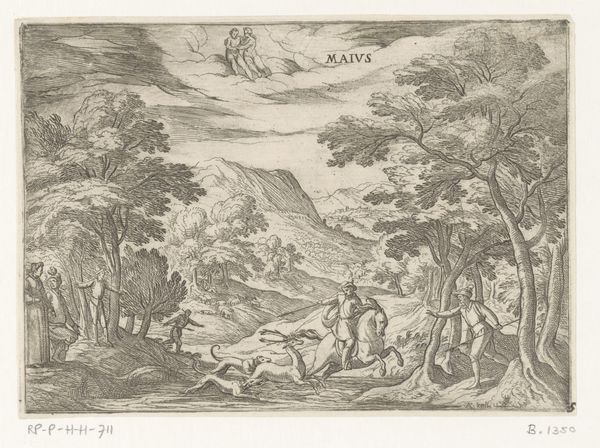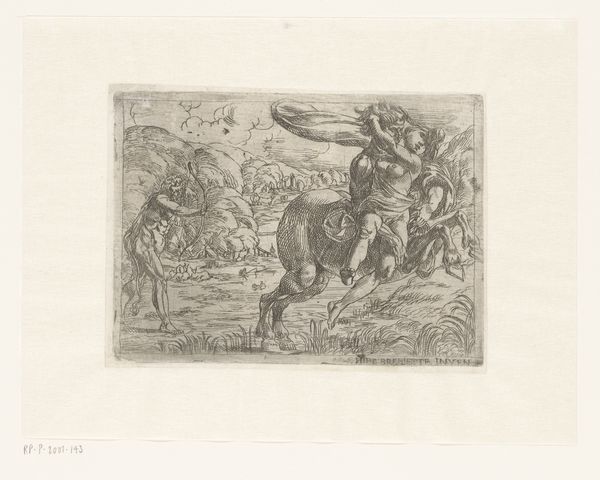
print, engraving
# print
#
old engraving style
#
landscape
#
figuration
#
genre-painting
#
northern-renaissance
#
engraving
Dimensions: height 57 mm, width 78 mm
Copyright: Rijks Museum: Open Domain
Editor: Here we have "Juni," an engraving created by Etienne Delaune in 1568, currently residing at the Rijksmuseum. It’s rendered in a fascinating old engraving style. The pastoral scene feels so idyllic, almost like a little vignette. What strikes you most about it? Curator: The most powerful aspect for me is the engraving’s symbolic density. See how the composition echoes classical prototypes of idealized rural life, a vision of harmony with nature? Yet, observe the ox in the sky – it references the Zodiac sign Taurus, connecting daily life to a wider cosmos and older mythological narratives of seasonal cycles. How does that link the people and the livestock depicted? Editor: It’s fascinating to see that link to astrology and the cycles of nature, but also… they're sheering sheep in the fields. That’s probably practical work and the work-a-day world right? Curator: Exactly! Delaune captures both the earthly work and the cosmic implications. The shearing itself has multiple symbolic valences; in the Bible, sheep have links to ideas around sacrifice. Do you notice how this practical work can also tie to seasonal traditions and community too? Editor: I do see it now; it all fits together and feels very Northern Renaissance! Curator: Precisely! And even this medium, engraving, carries cultural weight. The precision of the lines, the replicability… it speaks to the values of clarity and widespread dissemination of knowledge which are key elements within Renaissance humanism. These are ways for symbols and ideas to travel, both literally, with these prints, and metaphorically, through our minds and collective memories. Editor: So, the piece invites us to see beyond the immediate depiction of a pastoral scene. The visual cues build these deeper layers, these references to larger symbolic frameworks... I appreciate that much more now. Curator: And that appreciation allows the work to speak anew, connecting its era to our own ongoing engagement with symbols, imagery and shared meaning.
Comments
No comments
Be the first to comment and join the conversation on the ultimate creative platform.
